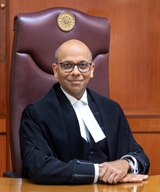“Originally published on 28-Mar-2012 in livemint in an online column ‘Lawyers Day Out’ by Anish Dayal now Senior Advocate Delhi High Court”
Karan Johar made his millions by giving an Indian twist to an old adage: “a family which prays together stays together”. Today’s Indian family however is neither a paragon of virtuous ideals nor a reflection of the “all is glorious in the Indian social milieu” line of thinking. In all probability, the Indian family may pray together, but will soon dispatch themselves to meeting their respective lawyers in the evening to plot, plan and machinate for the court hearing the next day over a family property dispute. This is the reality today for most Indian families, big or small, rich or not-so-rich. This great Indian hypocrisy gets played out in the courts, and we as lawyers are witness to it.
Professionalism prevents us from being judgmental when we see warring sisters, brothers, parents and uncles and aunts, briefing their lawyers outside the courtroom but refusing to even exchange a glance with their “family”. After all, it’s “their” dispute, not “ours” and our role is to guide these warring factions through legal armoury and procedural mazes.
But the ugly truth is that a huge chunk of litigation in the courts today relates to family squabbles. The increasing value of real estate today has driven a wedge through the unity of most Indian families. If there was only emotional friction earlier, today the presence of even a small piece of property within the family is enough to drive siblings to life-long animosity. And yet the ‘tamasha’ of the “Great Indian Family” rears its head in a near pantomime fashion at gala weddings. Sure it’s not a doomsday scenario, but one has to look closely to realize how many of us are afflicted with this disease called property and how much of our time goes into figuring out how that pricey piece of asset is owned, distributed or disputed between our kith and kin. The Hindu Undivided Family (HUF), a creature once created to evade tax – is today a noose around the neck of many who are trying to find their own little shores in its quagmire.
Every person has daggers drawn. There is eye demanded for an eye, a tooth for a tooth. There is no rapprochement, no resolution, no compromise, no pipe of peace. After all even a 1/8th share of an ancestral property in Delhi could make you richer by a couple of crores. So why bother with good old niceties? Why even think that getting a couple of lakhs less in a possible settlement could allow you continue joking with your brother the way you used to when you were teenagers? Why even sit back and consider that giving an extra bit to your sister would maybe help her tide over her life crises, when you could very well be leaving another half a crore for your progeny? It takes only a second to create battle positions, to create mistrust out of perfectly normal circumstances. But it takes a lifetime to build trust and enjoy the company of people that one proclaims as “family”. Ekta Kapoor was not too off the mark with her very successful series on TV – “Kahani Ghar Ghar Ki”. Its title was apposite in its meaning and scope and no surprise that it spawned a whole genre of successful Indian soap operas. Reel life was close to real life (excluding over the top costumes and make-up though!).
There is a dangerous tear in the fabric of Indian society. There are gaping holes in the warps and wefts. And the consequences are alarming. Litigation never mends. One person wins, one loses. One alleges, another counters. Today even the judges react in surprise to the number of cases in courts between families, fighting for that piece of balcony, or access rights to the terrace or that omnipotent restraint order to tie the hands of another family member.
What has happened? It’s not that disputes haven’t existed in families before. It’s just that the ferocity of the friction has increased, across all economic strata. The stakes, thanks to soaring real estate have increased manifold. Society, by various new distractions, particularly material in their nature, has become more self-centred. Late last century, joint families gave way to small nuclear families and which now in the shrinking world are disintegrating into sub-nuclear “atomic families” (to stretch the nuclear analogy) – single parents, one child, separate lives in distant apartment blocks. Therefore while on one hand there is physical detachment with the family, there is edgy material attachment to the family assets. Then there is a unique NRI problem. Family estates being in possession of ailing old parents, who may have one set of offspring pursuing their IT dreams in California while the other continues to manage the family business in Karol Bagh. While the NRI sibling lives in a perpetual cloud of insecurity over what might happen to his share of estate in India, the Indian anchored sibling may connive to extract his share and recompense for taking care of parents for all these years by a greater share in the property, if not all.
Being away compounds issues and the prospect of fighting a litigation ad infinitum ad nauseum in an Indian court makes the nightmare even more gruesome. And even if there is no major dispute, there is this weird awkwardness in interaction at family get-togethers, the subtext almost always being property.
While there is no solution for controlling human greed, there are ways which would at least reduce heart wrenching and pocket emptying litigation. The courts nowadays have been stressing on ADR (alternative dispute resolution) – either mediation of an elder in the family or mediation processes supervised by the Court. There is a dire need for institutionalizing and making such processes more visible and effective. And most importantly acceptance by warring factions that these processes offer the most important salve – the rebuilding of communication channels – usually the first casualty in cathartic conflicts. It also helps break the “circle of persecution” – one family member pointing to the other alleging persecution with the other pointing back with the same complaint! Courts in particular have become quite sensitized to these resolution processes. Lawyers too have a huge role to play – though suggesting resolution to an inimical litigant is usually seen by the litigant as a sign of “weakness”. Also most lawyers tend not to push too much towards a resolution considering that their billing depends upon continuing conflict. Then there is the role of elders in a family which is still critical. Often, if the elder himself is involved in the dispute there is little chance that they will play a constructive role. But if not, then wise, well-meaning elders can bring about magical resolutions. But experience has shown that a septuagenarian is as susceptible to the Machiavellian ways of plotting and planning as he is to being the wise sage. Entreaties too many elders not to leave family litigation as a painful legacy for the next generation more often than not fall on deaf ears.
The Indian family is undergoing serious traction. Somewhere behind the cordiality it is becoming an increasingly vestigial organ which pains and aches sometimes but is not capable of surgical removal. Our interactions have become imbued with suspicion and scepticism. Fair play or judiciousness has retreated into forgotten corners. Interpersonal interactions are forced and have a monetary tag to them. What we are left with is a will to fight for what we perceive as “our right”. What complicates this fight is the emotional complexity which suffuses it. It makes people vicious, when they really are not. It leaves generations tattered. Egos however still survive.
Anish Dayal is an advocate at the Supreme Court. An alumnus of Cambridge University, he works closely on policy and legislation, media, entertainment and sports law.

